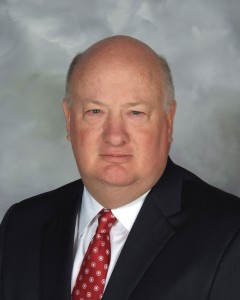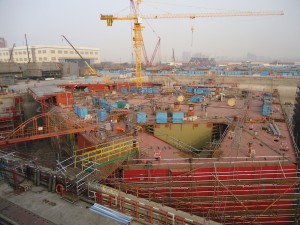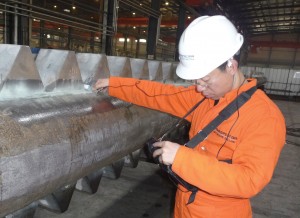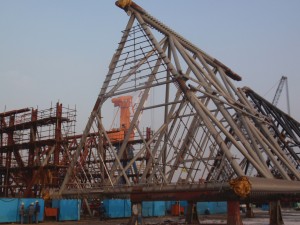Redundancy builds in maintenance time to boost safety, reliability
Efficiency, risk mitigation should go hand-in-hand if equipment is used effectively by competent workers
By Joanne Liou, editorial coordinator
Robert W. “Bill” Rose is president and CEO of Prospector Offshore Drilling and a former member of the IADC Executive Committee.

What are some of the most critical issues for drilling contractors?
There are two major issues: access to drilling areas and increasing the productivity and reliability of our operations. The challenge to gain access is making sure we provide drilling operations that build confidence. The stakeholders – the customers, the coastal state and the ultimate mineral rights holder – all have to be confident in our operational integrity in order for us to continue our work. We earn the right to access through stakeholder confidence in our operations.
Issues exist in the overall productivity and reliability of our drilling operations and in how effectively we execute E&P companies’ drilling programs. Effectively executing drilling programs involves bringing together two complementary activities: operational efficiency and risk mitigation. These are complementary because the same planning, organization, personnel competency, equipment capacity and redundancy attributes contribute to both activities.
How is Prospector responding to those challenges?
Prospector responds to these challenges through the development of systems and personnel. We are spending a great amount of effort on the development and assurance of our integrated management system while we prepare to recruit and train a competent work force.
Prospector’s equipment has greater redundancy and higher capacity than earlier generations; the equipment operates as a system rather than a group of components, which all contribute to a robust drilling operation. Our drilling system, with its more redundant components, provides assurance that the work we set out to perform will be accomplished.
This redundancy not only provides backup in the event of a component failure but allows for lower utilization factors and more planned maintenance time to prevent failure of the components. Older, less redundant equipment has higher utilization factors and less available maintenance time during execution of the drilling program.
A non-redundant component failure is not only inconvenient, it measurably increases the risk of safely completing the wells. Increased maintenance time, coupled with redundant equipment, contributes to mitigating drilling risk. In addition to redundancy and maintenance advantages, we combined technological and ergonomic advances, combined with increases in equipment capacity.
Prospector has six high-specification, harsh-environment rigs under construction with options to construct another six. What is driving larger, high-specification jackup designs?
We completed a detailed analysis of both the existing jackup fleet and the newbuild fleet. Our main focus was looking into what the E&P industry and our clients would require in the future and how our fleet would fit into their needs. One segment we felt was particularly under-built was the highest end of the non-Norwegian jackup market.
Based on our analysis, variable deck-load, hoisting capacity, living quarters capacity, enhanced safety systems and cantilever reach are all attributes generally available on larger harsh-environment rigs that provide great benefit, even in non-harsh environments. Typically, harsh-environment rigs provide an overall larger, more capable platform with more comprehensive safety designs to conduct operations. These rigs provide more versatility to E&P companies to execute their programs.

What kind of challenges are you seeing in the construction and design phases of Prospector’s first fleet?
Our first four rigs are being built by Dalian Shipbuilding Industry Offshore Co (DSIC) in Dalian, China. DSIC has previously built six of these rigs and currently has six under construction. Our fifth and sixth rigs are being constructed at Shanghai Waigaogiao Shipbuilding Co in Shanghai, China. We have a team of 29 Prospector employees at the shipyards who conduct inspections and complete engineering work on our vessels; we feel very confident about the construction being completed thoroughly and to the design specifications.
The challenge we face is the same challenge that all drilling companies face – to make sure the fully integrated drilling system performs as a system, rather than a group of components. In that respect, our drilling systems vendor, TTS Group, has a lot of experience with the high-performance rig floor and high-performance pipe-handling systems, which are both crucial parts of the overall system. The rest of the drilling system is about major proven equipment, so the risk will be to ensure this equipment works as a fully integrated system.
Across the onshore and offshore sides of the industry, companies face the task of hiring a number of new crews to operate the incoming newbuilds. How will the industry attract people to come aboard?
I am most comfortable addressing the personnel needs of the offshore drilling environment. All of our equipment is new, and we are working in a very professional environment with high-quality clients. If someone chooses to join our company, they know they will be working with the latest equipment, on some of the most aggressive drilling programs and with the best planned developments in the world. Employees will be joining a highly process-driven company with a culture completely built around planned activities and safety molded into every action.
This will be an attractive place to work. We pay a competitive salary and offer great benefits, but what really makes our company attractive is the type of work we do and the kind of people you will have the opportunity to work with. We are very careful and highly specific in our recruiting; it is our mission to recruit only people we think are extremely capable industry professionals and can develop competency in our systems.
When the term “great crew change” is used, there is a perception that everybody gets old all at once, and they all retire with no one to replace them. As an industry, we took a long holiday from hiring people; that holiday ran from about 1984 into the mid-’90s. In the mid-’90s, we got aggressive again and started hiring. There are a lot of spectacular young people out there – young professionals with broad experience. Many of those people are, in fact, waiting for the great crew change so they will have their opportunity.
In addition to our existing group of young professionals, there are many sources of professionals to bring into the industry. The US and European militaries are downsizing; extremely professional people will come out of those institutions and will fit very well in our industry. They are disciplined, process-driven and enjoy a professional atmosphere.
Our business is challenging, but it comes down to the approach you take. If you are not willing to devote the effort to train and develop your work force, then these challenges become insurmountable. However, if you analyze the requirements and train to develop the necessary competence, you will achieve the safest and highest-quality operations.

How is the industry integrating new technologies and equipment and troubleshooting the new sets of problems that follow?
We, as an industry, have opportunities for improvement in these areas. In the last several years, we have rounded the corner, but there was a significant amount of trouble integrating the technology from the late-’90s into the last series of rigs. With a concerted effort by the equipment manufacturers and drilling contractors, what was once high-technology and difficult to troubleshoot has become mainstream. This did not just happen; it is a result of a real pan-industry effort to increase reliability and broaden the knowledge base.
The next challenge is to make sure we can use new technology and equipment effectively and in a manner that allows reliable service throughout a drilling program. Technological advances in all aspects of the drilling process have increased the utilization factor for many rig floor components, thereby allowing less time for planned maintenance. A typical example would be the iron roughneck, which operates almost nonstop, allowing no opportunity for extended inspection and maintenance programs.
By providing redundancy in these highly utilized components, the contractor not only creates a backup but also creates extended maintenance and inspection opportunities.
Is there opportunity for automation to be more effective in the industry and, more specifically, in the jackup market?
The short answer is yes. There are vast opportunities for automation to become much more prevalent and make a much greater contribution to the drilling process in the jackup market. To realize the benefits of automation, there are two fundamental issues related to offshore drilling that must be recognized: the limited physical space onboard mobile rigs and the logistical constraints of offshore operations. Some of the advances in land drilling operations have involved special-purpose batch processes with special rigs and tools for each hole section. In order for offshore jackup automation to yield its potential benefits, we need to automate the process in a manner that allows sequential well construction to proceed on a single rig.
Modern equipment allows for extensive mechanization and the near elimination of manual handling in the drilling process. The mechanized drilling process is still heavily dependent on human control. This control extends beyond planning and oversight to the point where personnel are performing tedious monitoring and adjusting of the drilling operation, which can be performed more diligently and completely through automation.
Is the industry headed in the right direction when it comes to automation?
Our industry has a certain amount of inertia that is hard to overcome because the risks are high and because the number of inputs is large. It takes a while for our industry to make changes. However, with the high level of mechanization and the lack of need for manual intervention into the work of a modern rig, we should dramatically increase the pace of our automation efforts.
Simply trying to move batch setting automation, suitable for onshore field developments, will hit a logistical bottleneck and not provide the benefits that can be realized through a concentrated effort built around our latest-generation deck and rig floor equipment. I am very optimistic that the right combination of equipment manufacturer, drilling contractor and E&P company could bring about a rapid automation of the jackup drilling process, yielding tremendous improvements in safety and efficiency.
How are drilling contractors responding to the continuous introduction of new regulations? How are regulations affecting Prospector in its construction phase?
Drilling contractors are responding to these new regulations by understanding them and ensuring they meet the letter of the regulation and the underlying expectation. This proactive approach has always characterized our industry. Beyond solely responding to regulations, it is important that the industry continue to work with the regulators to ensure new regulations provide meaningful improvements in the overall regime that will benefit all stakeholders, rather than just a perceived quick fix.
If you are a proactive, aggressive company, you do not fear regulations that are in support of a safer, more effective, long-term industry. The reality is that offshore Europe is a comprehensively regulated environment. Europe is the place we chose to go because our process, the way we run our company, fits very well in a regulated environment. We would be surprised if the regulators required more of us than we required of ourselves when it comes to the integrity of our operations and the safety of our personnel.
Regulations are a big part of the challenge for a new company, but it comes back to obtaining and maintaining the right to access. You earn the right to explore for oil and gas in these countries through high-integrity operations and an assured outcome. Regulations that contribute to the safety of our personnel and the protection of the environment, when properly crafted and enforced, are supportive of the integrity of our operations.

What challenges do you face as a new company – Prospector was founded in 2009 – as you develop a training and safety program from a clean slate?
Existing drilling contractors have the advantage of some very experienced personnel, as well as the favorable situation of a fully developed system of doing their work. These advantages can also be hindrances; for example, when we develop a competency system for our company, it is developed around the needs of the organization and does not need to be compromised to fit an existing work force. We do not have to make the system comply with our existing paradigm; we can craft it around our operational integrity needs.
As we design our management system and execute it, we incorporate the latest generation of best practices. We do not have earlier-generation practices that must be adapted to new equipment, regulations and expectations; we have the opportunity to train employees in systems that are bespoke for our mission.
Process-driven operations require people to do neither what they have always done nor what their experience tells them to do; alternately, they follow a pre-planned program. While this puts a significant burden on our training and management system, it allows us to make sure our personnel are competent and prepared to perform the task according to our systems. I do not want to demean experience; however, you do not want inappropriately applied experience to take the place of thought-out planning and underlining science.
We are deep in the development of our management system and associated training and development programs. We are focused on formal training for our personnel based on our equipment and our rigs. This is why we will bring operating personnel into the company in advance of delivery of our first rig.
After delivery of the vessel, we will undergo an extended period of Crew Familiarization and Systems Training (CFST). CFST is not about testing the rig; it is about training personnel in the management systems and details of how we safely execute our work. CFST follows a protocol of activities providing our crews with confidence in their understanding and provide formal assurance that we can safely and efficiently perform the task required in well construction.
What was your main focus for 2011? And what will be your main focus for 2012?
Our main focus in 2011 was expanding our fleet and planning for the future. We went from two rigs in December 2010 to six rigs by August 2011. Exercising the options to build rigs three and four and then starting a contract to build rigs five and six consumed a large portion of our attention. Our efforts also went into launching our construction program and establishing our site team, as well as all of the planning necessary to prepare to crew and develop the company over the course of 2012.
At the end of 2012, we are going to bring three things together: crews, rigs and systems to execute the drilling program of our E&P customer. As those three components come together, it is going to be an exciting 2012 for Prospector.
